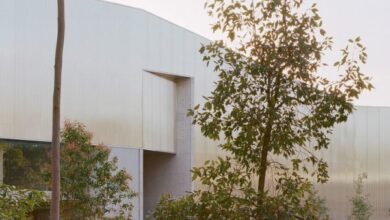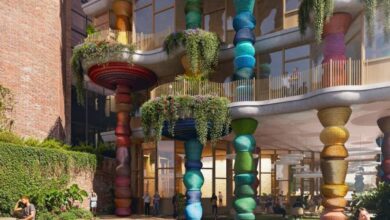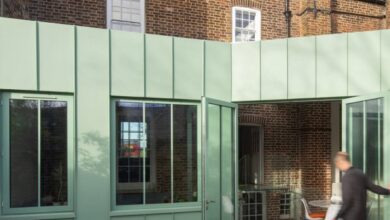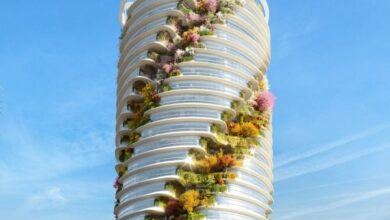
Firma completes home and legacy museum for artist Charles Pachter
[ad_1]
An extension made of blue corrugated metal panels has been added to a laneway house in Toronto’s Chinatown neighbourhood to create a new museum and residence for the Canadian artist Charles Pachter.
Charles Pachter is a Canadian artist, known for his paintings of moose, landscapes and Queen Elizabeth. The artist wanted to renovate an existing studio, which occupies an industrial lot in Toronto’s Chinatown.
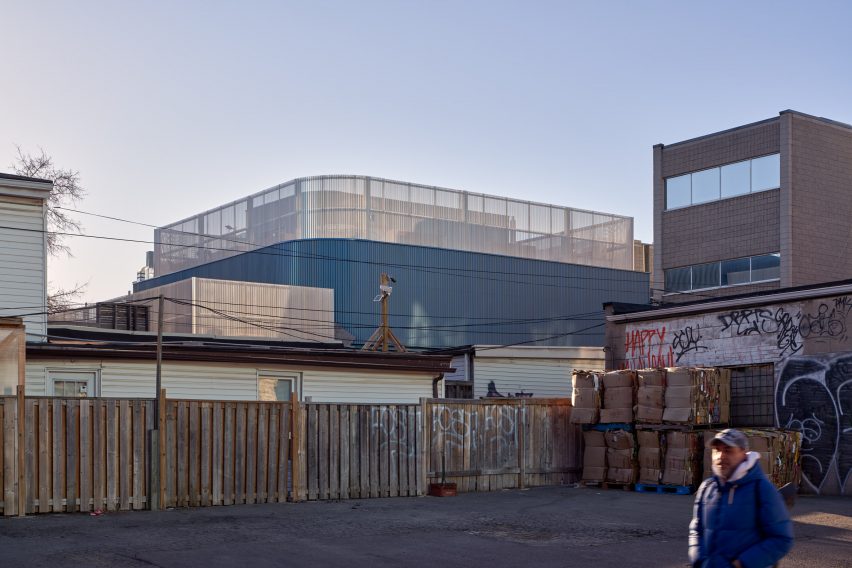
The artist commissioned local architect Lia Maston of Firma for the renovation and extension. Firma, which Maston founded in 2014, focuses on revitalising laneway houses in Toronto.
“Pachter purchased the lot, which included a one-storey warehouse in the rear, in 1996 and used the existing space as an intimate event space for launches and fundraisers, dubbed the Moose Factory,” said Firma.
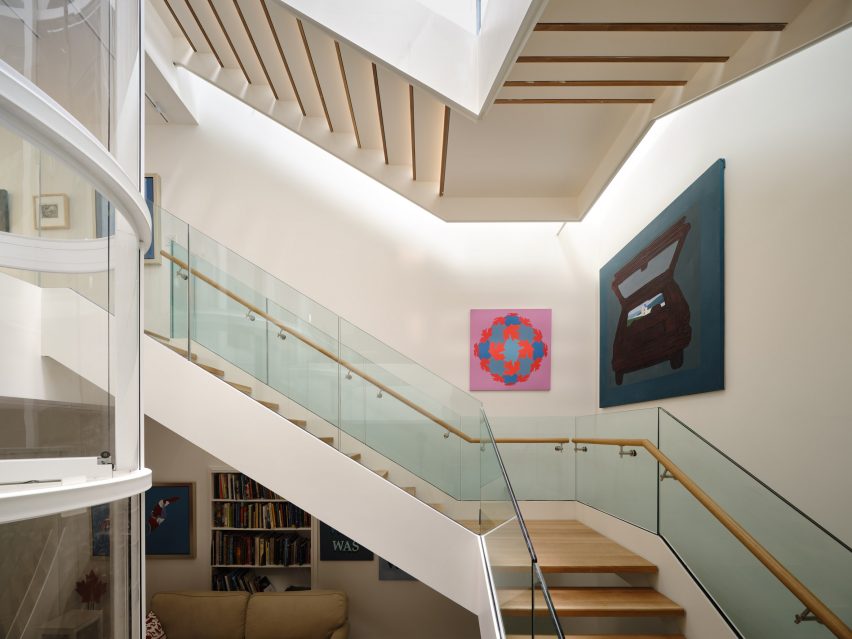
The intervention was completed in October 2022 and added two storeys to the back of the property to create a 7,800 square-foot space (725 square metres). The building contains the artist’s living quarters, and office, as well as a gallery and event space.
The extension features curved corners on the outside that were inspired by the rounded forms found in Pachter’s paintings.
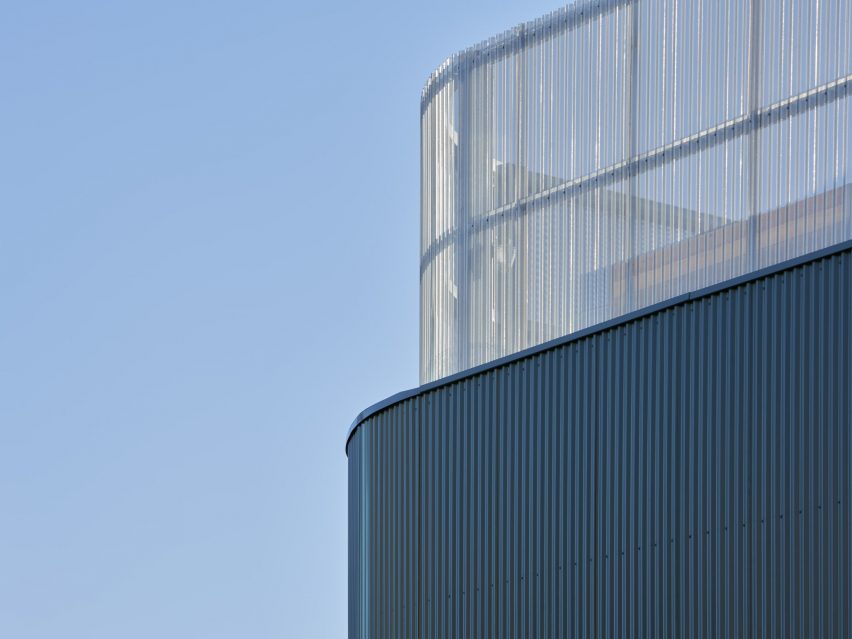
“We used Charles’ paintings as a departure point for the building’s design: his colour palette of blues, the reductive simplicity of the form,” said Lia Maston.
“Working with Charles pushed me to do something more interesting than usual, using art as a springboard.”
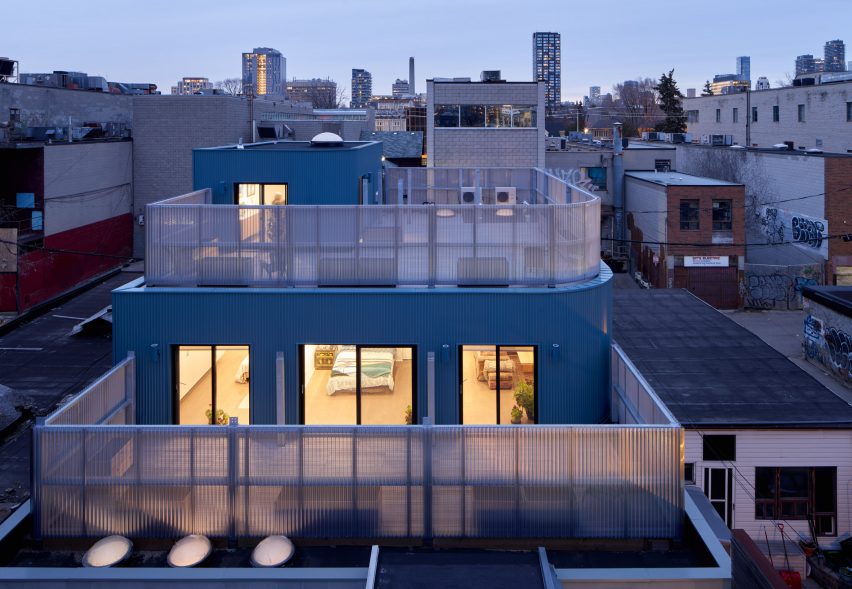
As the building rises above its neighbours, it steps back to create exterior terraces on the second floor and on the roof.
“Rising above its surrounds, the new museum, with its curved tiers and large wooden decks is reminiscent of a 20th-century ocean liner,” said Firma.
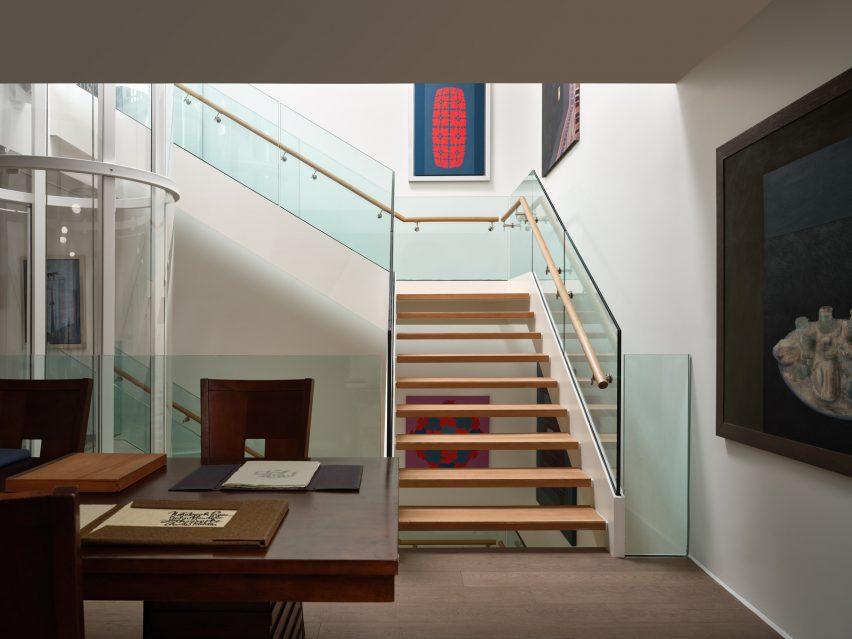
The interiors of the space were designed to be filled with natural light while avoiding direct sunlight. Within the gallery spaces, multiple round skylights help to display Pachter’s paintings more naturally.
“Working together, Pachter and Maston created a space for the artist to both create and celebrate the art,” said the team.
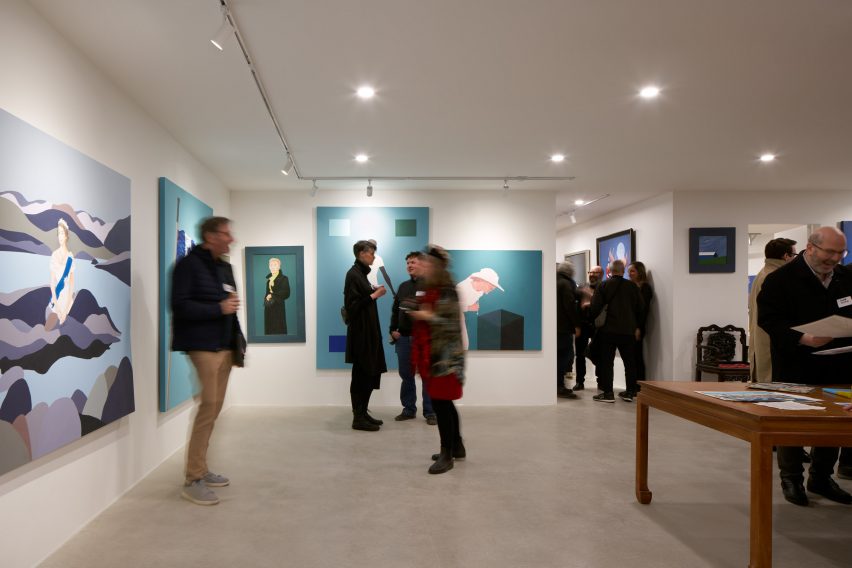
At the back of the space, the studio included a white steel staircase with open treads that connects all of the floors. This stair wraps around a curved glass elevator that lends the space a refined and futuristic feel.
The building’s ground floor is reserved for public events. Upstairs are the artist’s quarters, which include two bedrooms, a living area and an office.
On the top floor there is a small overrun that is used to access the expansive rooftop. Perforated metal screens wrap the exterior spaces, offering some privacy.
“The building is clad in undulating teal sheet metal, and the decks are enclosed by screens made of wavy and perforated aluminum sheet metal,” said Firma.
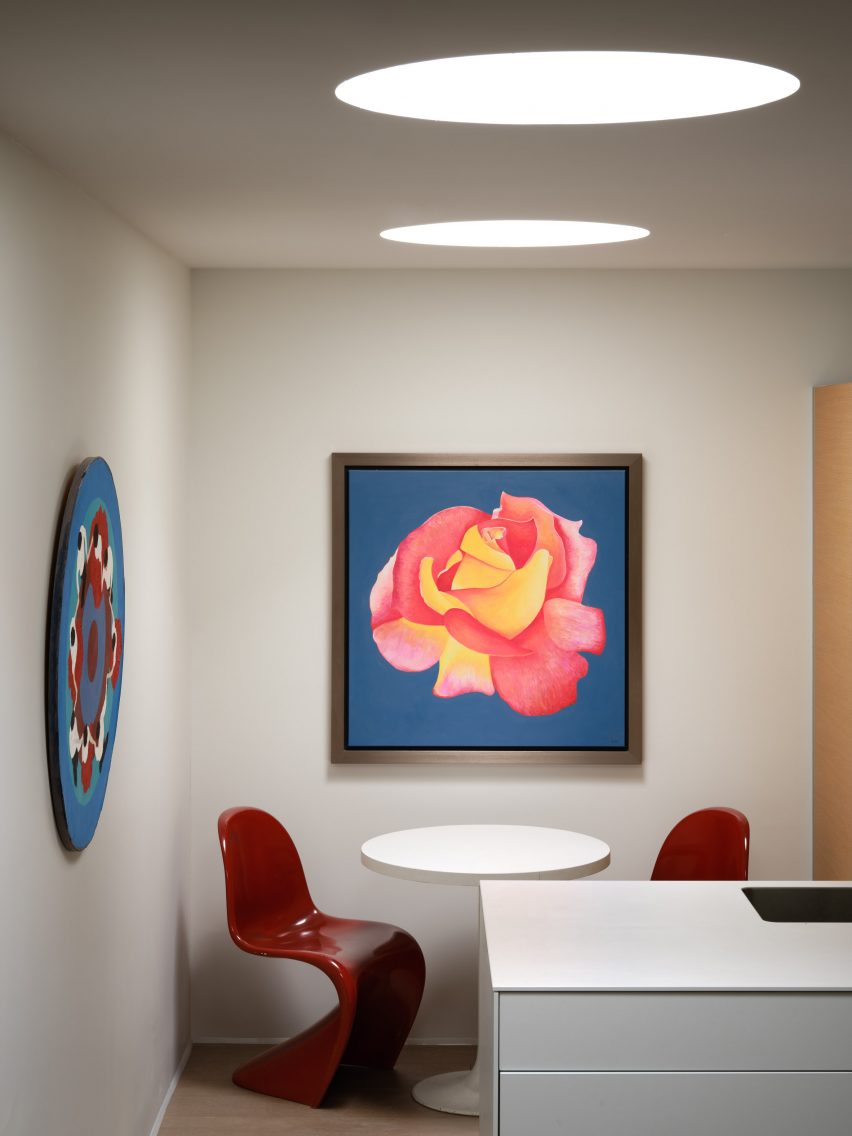
Other art galleries include a new gallery in LA that showcases the work of up-and-coming Korean artists and a monolithic concrete gallery in Maryland that Thomas Phifer and Partners designed to house sculptures by artist Richard Serra.
The photography is by Doublespace Photography.
[ad_2]


